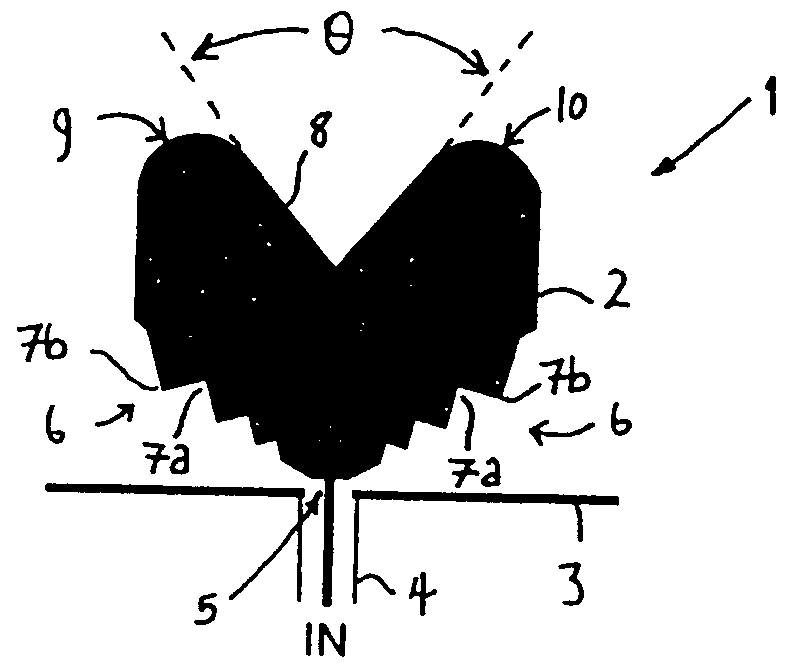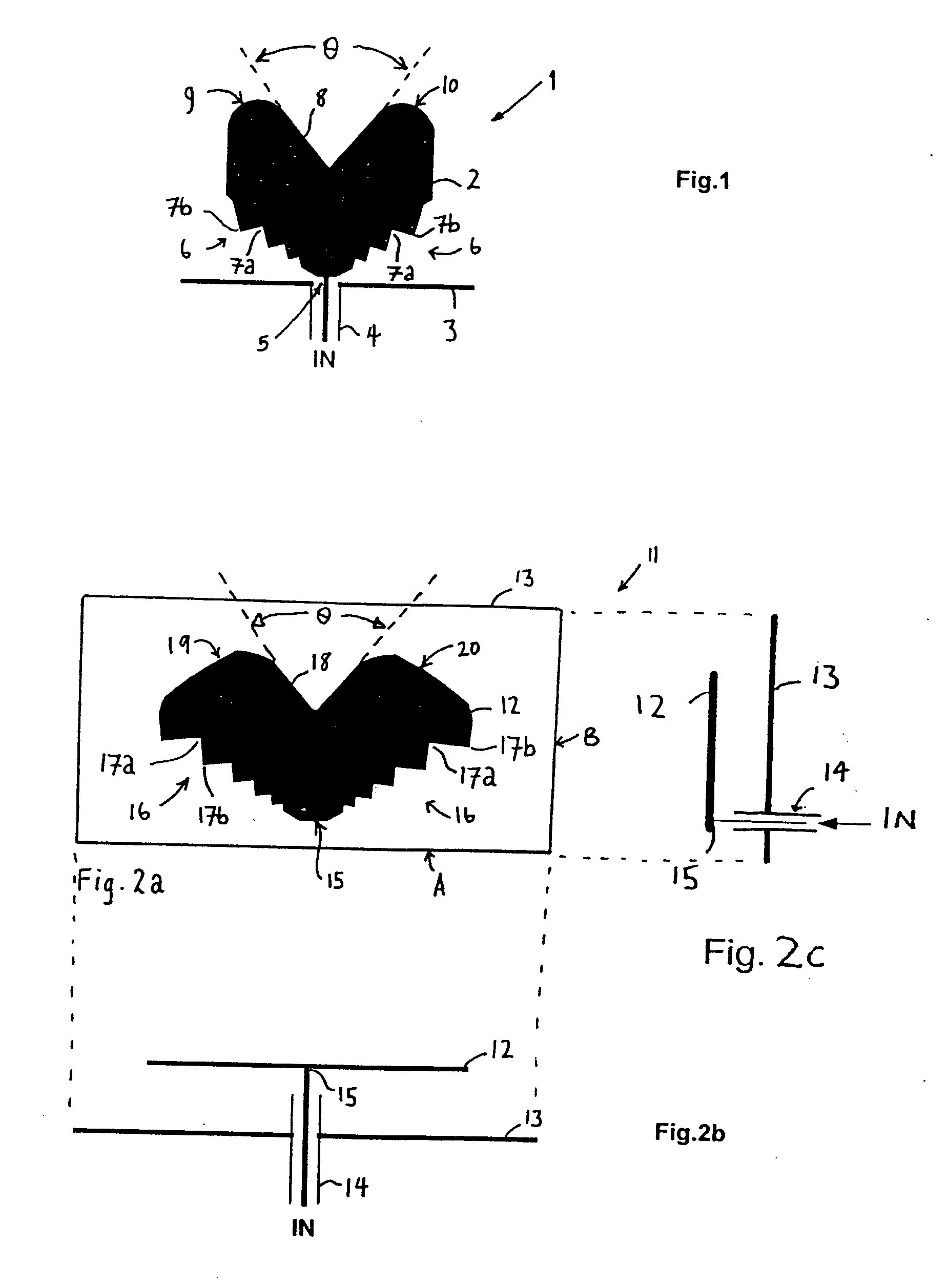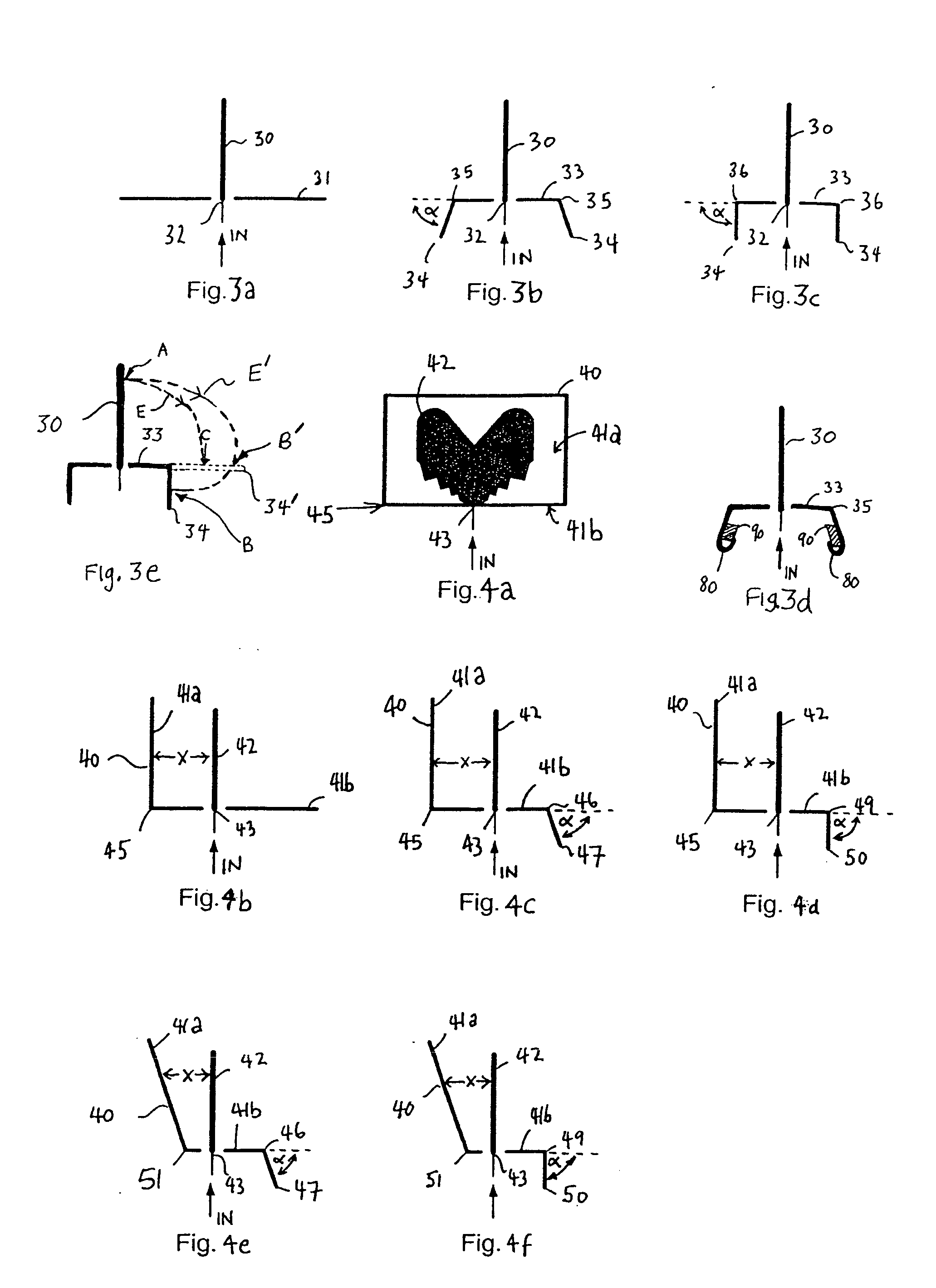Antenna
a technology of antennas and antennas, applied in the direction of antennas, non-resonant long antennas, antenna structural forms, etc., can solve the problems of excessive attenuation of received/transmitted signal energy and corresponding reduction of bandwidth, so as to increase antenna bandwidth, reduce antenna size, and increase antenna size
- Summary
- Abstract
- Description
- Claims
- Application Information
AI Technical Summary
Benefits of technology
Problems solved by technology
Method used
Image
Examples
Embodiment Construction
Referring to FIG. 1 there is illustrated a monopole antenna 1 comprising a planar radiating element 2 comprising a substantially flat sheet of conductive material generally shaped as a segment having two opposed slant edges 6, which diverge outwardly from an apex of the segment. The antenna radiating element 2 has a signal feed-point 5 at the apex of the segment.
The two opposed slant edges 6 diverge with increasing distance from the antenna feed-point 5 such that the radiating element 2 tapers outwardly from the feed-point. The radiating element possesses a distal peripheral edge (8, 9 and 10) which bridges the terminal outermost ends of the two opposed slant edges and forms the curved outermost periphery of the radiating element.
The radiating element has two identical series of serrations 7b each formed within a respective one of the two opposed slant edges. Each serration of a given series of serrations is formed by a pair of successive angular (tapering) notches 7a which ext...
PUM
 Login to View More
Login to View More Abstract
Description
Claims
Application Information
 Login to View More
Login to View More - R&D
- Intellectual Property
- Life Sciences
- Materials
- Tech Scout
- Unparalleled Data Quality
- Higher Quality Content
- 60% Fewer Hallucinations
Browse by: Latest US Patents, China's latest patents, Technical Efficacy Thesaurus, Application Domain, Technology Topic, Popular Technical Reports.
© 2025 PatSnap. All rights reserved.Legal|Privacy policy|Modern Slavery Act Transparency Statement|Sitemap|About US| Contact US: help@patsnap.com



